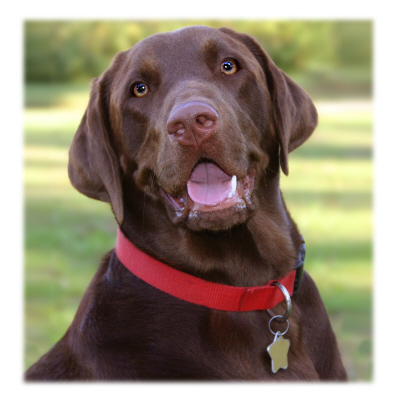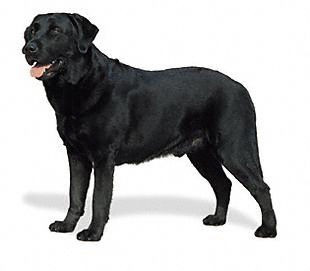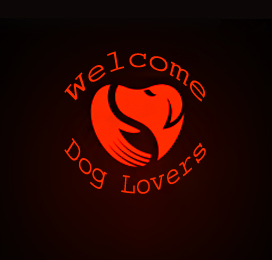Dog Breed Information - Getting To Know Your Labrador Dog

Well, let’s talk about the Labrador Retriever in general. One most amazing fact about Labrador Retriever that most Labrador owners are probably not aware of, is that the different breeding art of the American and English breeders have resulted two types of Labradors with a bit different appearance.
#1… English Labrador, which descends from English bred stock, and are a bit heavier in appearance. They are slightly shorter-bodied, with thick coat and tail.
#2… American Labradors descends from American bred stock, which are a bit tall and lanky and less heavy in appearance.
Now I am sure, this will raise a topic of debate as to which is better. Both! Both are equally good in degree of intelligence and as guard dogs. Both are great companions, highly loyal and make wonderful pet as apartment dogs! Labrador Retrievers are amongst the most friendly, well-balanced and versatile dog breeds that are easily adaptable to a wide range of situations and functions including making good pets. Putting things in simpler form, these are just the variations in lines, with differences in physique, arisen out of the specialized breeding. The Labradors bred for hunting or working in the field are picked first for working ability, while those bred for performing in the conformation showing are picked for the characteristics desired for show rings. These are the basic difference between the field and trial-bred Labrador dogs (which are sometimes called "American Labradors") and the Show bred Labradors (which are often called "English Labradors").
General Appearance
Based on the AKC standard Labrador Retriever is a strongly built, short-coupled, compact dog that possesses a well-balanced athletic structure that enables it to act as a perfect retrieving gun dog to hunt waterfowl as well as upland game for long hours under critical situations. With an appearance of proportionality, Labrador males should stand 22.5-24.5 inch (55.9-62.5 cm) tall and females should stand 21.5–23.5 inch (54.5–60 cm) tall at the withers. Well, the UK Kennel Club standards choose to differ slightly with 22–22.5 inch (55.9–57.2 cm) tall for males, and 21.5–22 inch (54.6–55.9 cm) tall for females at the withers. The foreface and the skull should be on parallel planes and of approximately equal in length, which is an indication of a well bred specimen. Topline should be strong is level from the withers to the croup region when on move or stand. The loin region should be free from stiffness and must essentially show evidence of flexibility for easy athletic endeavor and effortless move. Another most distinguishing feature of a well bred Labrador dog is his tail, which should be broader at the base, and gradually tapering towards the tip. It should be of medium length, and must not extend below the hock. Feathery and bushy tail is a serious fault in the breed, although rarely seen theses days. Coat slight wave down the back may be permissible but not desirable. Woolly coats, sparse slick coats, soft silky coats, wiry coat are not typical of the breed at all, and hence are disqualification.
Expression
Short dense coat should not essentially be wiry and must be 'water-resistant'… more accurately 'water-repellent'. This enables the dog work safely in the water without getting cold in the winter. The chestnut or hazel eyes and medium-sized ears are pendant ears gives a highly intelligent and impressive expression. Well developed, but non-exaggeratedly broad skull, thick nose, pronounced stop, fairly wide muzzle and powerful neck gives a clear impression of strength. The jaws must powerful and free from snippiness.
Temperament
Being calm and of cool demeanor, Labrador Retrievers have been admired world wide as perfect pet. By nature Labrador dogs are not prone to being territorial, hypersensitive insecure, aggressive, and destructive, and as the name suggests, this dog breed is one of the excellent retrievers and swimmers. His gentleness, intelligence, non-aggressive and adaptable nature make him an ideal dog. Aggressiveness towards other dogs and humans, or any sign of shyness in adult dog are disqualification. Although safe, but they shouldn’t be left unattended with kids, since they can sometimes knock kids down while on play and unintentionally harm children.
History of Labrador Retriever Dogs
Contrary to its name, the Labrador Retriever probably originated from the St. John's Dogs of Newfoundland used by the fishermen for fishing. These amazing St. John's Dogs would freak out with their fishermen masters in their boat and helped them by retrieving nets of fish from distance, pulling them back to the boat. These early dog breed (St. John's Dogs) had rudder-like tail, high endurance, and highly fond of swimming seen in the Labradors that we find these days!
During the late nineteenth century, some of the St. John’s Dogs had been trained to perform on land, as gun dogs for hunting and retrieving, instead of working in water. More refined dogs had been produced by scientific breeding program and the progenitors came to be known as “Labrador Dogs” – a name given to distinguish them from their larger ancestors – the Newfoundland Dogs. Thereafter constant research and developed selective breeding produced something that we call Labrador Retrievers.
Special Fact
Labradoodle is the hottest designer dog that has been made by cross breeding Labrador and Poodle. This is one hybrid dog breed that suites best for family with members who are suffering from allergy. Labradoodle has been one of the best choices of the US President Barack Obama as the First Dog. Check out my post of President’s Choice of LABRADOODLE. Read out more about OBAMA DOG ISSUE.
Recognition:
The Labrador Retriever Dog breed has been officially recognized by 10 National Kennel Clubs all over the world. This amazing gundog breed has been recognized by CKC, FCI, AKC, UKC, ANKC, NKC, NZKC, APRI, ACR.
Glossary:


























2 comments:
Greetings for all Labradors in the world.
Thanks for interesting info.
Thank for the info abt English and American labs. I was a bit confused abt the size difference between my black lab ( pachchu) and my brown lab( kuttappayi). Pachchu is no more( may his soul rest in peace and memories will remain with me).
Love and Hugs to all Labradors in the world.
Ajayan and Kuttappayi
Post a Comment